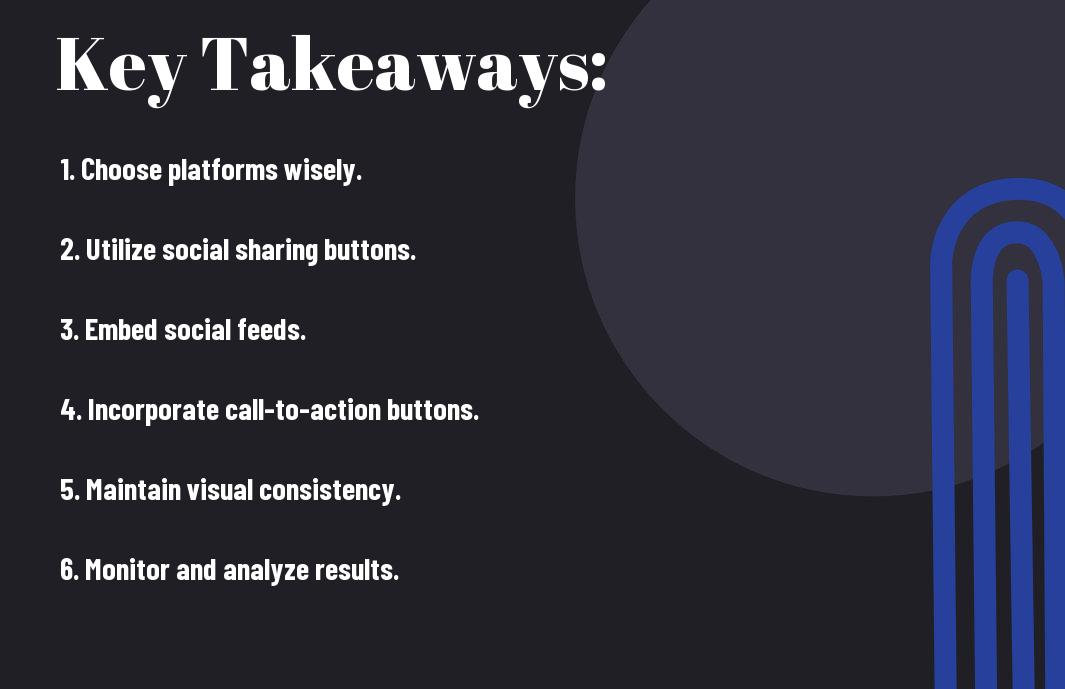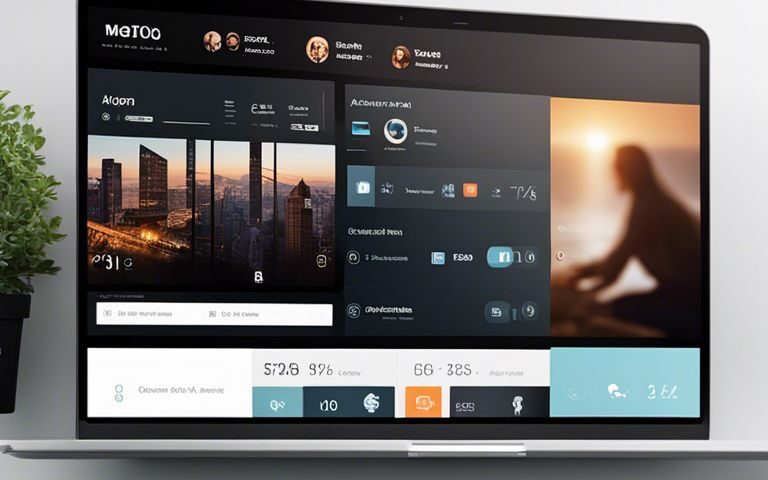Integrate Social Media Marketing Seamlessly Into Your Website

The Importance Of Social Media Integration In Modern Website Design
April 1, 2024
Elevate Your Brand With Professional Logo Design And Branding Services
April 3, 2024With the digital landscape evolving rapidly, it has become crucial for businesses to integrate social media marketing into their websites seamlessly. This not only enhances brand visibility but also drives engagement with the audience. In today’s competitive market, having a strong social media presence can make or break a business. In our blog post, we will explore 3 Ways to Integrate Social Media into Your Website to help you stay ahead of the curve and maximize your online reach.
Key Takeaways:
- Strategic Placement: Integrate social media buttons and feeds in a strategic placement on your website to maximize visibility and engagement.
- Consistent Branding: Ensure that your social media content and website design are consistent with your brand to create a unified online presence.
- Interactive Content: Use interactive social media widgets such as live feeds and social sharing buttons to encourage user interaction and sharing on your website.


Identifying Your Social Media Goals
Establishing Clear Objectives
While initiateing on your social media marketing journey, it is crucial to establish clear objectives. These objectives should be specific, measurable, achievable, relevant, and time-bound (SMART). This step is important to ensure that your social media efforts are aligned with your overall business goals and help you track progress effectively.
Aligning Social Media Goals with Website Strategy
The alignment of your social media goals with your website strategy is critical for a seamless integration. This ensures that your social media efforts drive traffic to your website, engage visitors, and ultimately convert them into customers. By aligning your social media goals with your website strategy, you can maximize the effectiveness of both your social media and website efforts.
Design Considerations for Seamless Integration
Incorporating Social Media Feeds
After deciding to integrate social media marketing seamlessly into your website, it’s crucial to consider how you can incorporate social media feeds effectively. One way to do this is by embedding live social media feeds directly on your website. This allows visitors to see real-time updates from your social platforms without leaving your site.
Integrating Share and Follow Buttons
On the other hand, integrating share and follow buttons strategically on your website can enhance user engagement and amplify your social media presence. By strategically placing these buttons on your site, you make it easy for visitors to share your content with their networks and follow your social media accounts with just a click.
For instance, placing share buttons at the end of a blog post can encourage readers to share the content they just enjoyed, potentially expanding your reach to a broader audience. Additionally, including follow buttons in the header or footer of your website ensures that visitors can easily connect with your brand on social media platforms.
Content Synchronization
Leveraging User-Generated Content
One of the most powerful tools in social media marketing is user-generated content. By encouraging your audience to share their own experiences, reviews, or creations related to your brand, you can create a sense of community and authenticity around your website. Utilizing user-generated content not only fosters engagement but also provides valuable social proof to potential customers, showing that real people are using and enjoying your products or services.
Cross-Promotion Across Platforms
Across various social media platforms, it’s crucial to ensure your content is synced and consistent to maintain a strong online presence. Cross-promoting your website content on different platforms such as Facebook, Instagram, Twitter, and LinkedIn can help reach a wider audience and drive traffic back to your site. This tactic also reinforces your brand’s messaging and increases brand awareness among users who may not follow all your accounts.
With cross-promotion, it’s important to tailor your content to each platform’s unique features and audience demographics. For example, you may use visually appealing images on Instagram, while sharing more industry-related articles on LinkedIn. By strategically sharing content across platforms, you can maximize your reach and engage with diverse audiences effectively.

Analytics and Optimization
Tracking Engagement and Referral Traffic
Now, when integrating social media marketing into your website, tracking engagement and referral traffic is crucial. Using tools like Google Analytics or social media platform insights, you can monitor the effectiveness of your social media campaigns. Tracking likes, shares, comments, and click-through rates can help you understand what content resonates with your audience and where your traffic is coming from.
Using Data to Refine Social Media Tactics
An important aspect of integrating social media marketing seamlessly into your website is utilizing data to refine your tactics. Any successful online strategy requires constant optimization. By analyzing the data gathered from your social media campaigns, you can identify trends, determine what works best, and make informed decisions to enhance your overall marketing efforts.
Social media data provides a wealth of insights into your audience’s preferences and behaviors, allowing you to tailor your content and messaging for maximum impact. By identifying key metrics such as engagement rates, conversion rates, and ROI, you can refine your social media tactics to attract more followers, drive traffic, and ultimately achieve your marketing goals.

Conclusion
On the whole, integrating social media marketing seamlessly into your website is crucial for maximizing your online presence and engaging with your audience effectively. By following the strategies outlined in 6 ways to use your website and social media together for…, you can create a cohesive digital marketing strategy that drives traffic, increases brand awareness, and boosts conversions. Incorporating social media elements into your website not only enhances user experience but also strengthens your online branding efforts. Stay connected with your customers, build relationships, and cultivate a strong online community by leveraging the power of social media within your website.
FAQ
Q: Why is it important to integrate social media marketing into your website?
A: Integrating social media marketing into your website helps increase brand visibility, engagement, and website traffic. It also allows you to reach a wider audience and build a community around your brand.
Q: How can I seamlessly integrate social media into my website?
A: You can seamlessly integrate social media into your website by adding social media buttons, incorporating social media feeds, enabling social sharing options for your content, and creating social login options for users.
Q: What are the benefits of integrating social media marketing into my website?
A: The benefits of integrating social media marketing into your website include improved brand awareness, increased website traffic, higher customer engagement, enhanced SEO rankings, and better customer insights.
Q: Which social media platforms should I focus on integrating into my website?
A: Focus on integrating the social media platforms that are most relevant to your target audience and align with your brand’s goals. This could include popular platforms like Facebook, Instagram, Twitter, LinkedIn, Pinterest, or YouTube.
Q: How can I measure the effectiveness of my integrated social media marketing efforts?
A: You can measure the effectiveness of your integrated social media marketing efforts by tracking metrics such as website traffic from social media, social engagement (likes, comments, shares), lead generation, conversion rates, and ROI. Use analytics tools provided by social media platforms and website analytics to monitor your performance.


